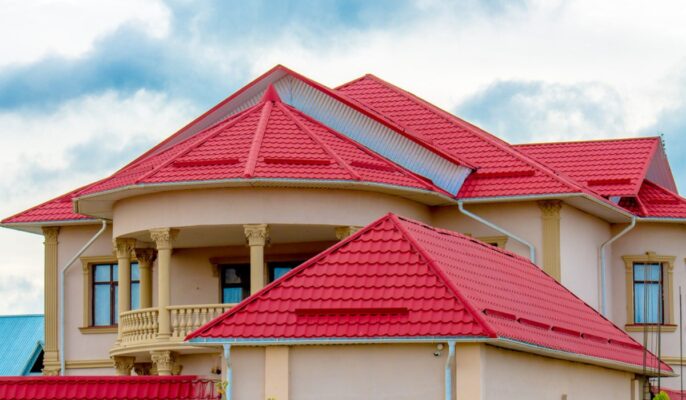The most obvious place to look for leaks is above evidence of water damage; look above the leak for water stains, mold, wet insulation, or other signs of a water leak.
Check under roof tiles for moisture or mold around vents, chimneys, or other entry points. Check at any point where roof tile planes intersect and are near the watchtower.
If the leak source is not near the point of internal moisture, there may be a problem with the roof tile material. Remember that water may travel long distances along a path before passing through roof tiles into the house.
Measure from inside the house and use these measurements to guide you outside. Be sure to measure horizontally from the center of the sidewall and down from the ridge.
After you have identified the source of the leak, it is essential to take immediate steps to minimize damage and repair the source of the leak and also use the help on cleaning services in case of any major house damage. To deal with leaking roof tiles, follow these steps:
- To control where the water will fall, attach a string near the stream of water and let it hang in the bucket. Water should follow the rope, thereby minimizing more water damage.
- Drill a hole in the ceiling to allow water to flow through. This prevents water from spreading along with the ceiling, thus preventing the ceiling from becoming saturated with water. Permitting ceilings to saturate pose a danger of collapsing.
When you’re ready to begin work on repairing leaks in roof tiles, follow these steps:
- Use the measurements you made earlier in the building to begin your first observation of exterior roof tiles. Using binoculars or stairs, look for places where there may be missing shingles or other obvious problems with roof tiles. It’s important to follow general safety instructions whenever you work on roof tiles, including not walking on pitched roof tiles when wet.
- From stairs or using binoculars, look for debris such as leaves and other materials that can hinder the downward flow of rainwater. This debris usually accumulates in valleys or adjacent to a window protruding from the roof tile or other areas of roof tile drilling. Remove any debris if it can be reached safely.
- If there is ice or snow on the roof tile, an ice dam may form on the lower edge of the roof tile, and this ice dam may cause water to back up under the roof tile material. If it can get to the ice dam safely, it should be removed.
- If you can safely get close, check metal flashes on the roof tiles for signs of corrosion and for open joints that connect to the chimney. If corrosion is found, patching can be used, but the only long-term solution is to replace it.
- When inspecting roof tiles, pay attention to the point of flashing black cement glaze, as this generally means repairing a previous leak. Watch for cracks or small holes that may occur in the roof tile material. Using flashing cement in those holes will be a temporary fix until more permanent fixes can be applied.
- Look for attachments to satellite dishes, antennas, and other objects that may be nailed or screwed onto roof tiles. You can place a skirt of flashing over each fastener if needed.
- If you have determined that the leak is in the middle of the roof tile, check if there are any damaged or missing shingles. For wood roof tiles, check to see if they are vibrating, cracked or distorted, or wood shingles. If the roof tile is flat or nearly flat, a close inspection may be required to look for damaged or worn shingles. Also know that you can contact us and your satisfaction is 100% satisfaction guaranteed.








